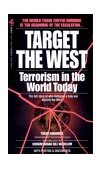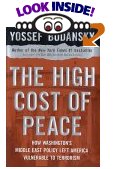|
|
BOOK REVIEW
Future Shock
By Chanakya Sen
A Review of
The Writing on the Wall. India
Checkmates America 2017 by S Padmanabhan

In a February 2004 joint combat exercise
of the US and Indian Air Forces held in Gwalior, American F15C planes
were defeated nine out of 10 times by Indian pilots flying Russian-made
SU30Ks and MIG-21s. This set the cat among the strategic community
pigeons, who inferred that a developing country with skills and
equipment can stave off the mightiest. Former Indian army chief General
Padmanabhan's elucidation of US-India conflict buttresses the case. The
short war results in hasty retreat of the superpower, which faces a
prepared and vigilant India.
The curtain raises in April 2003. Despite differing institutional
perspectives on responding to the US invasion of Iraq, strategists
concur that India could become a future object of US military whims. New
Delhi's aversion to providing troops for the US-led stabilization force
in Iraq and Washington's strong tilt towards Pakistan appear to be a
casus belli. The Indian defense minister asks his service chiefs how
asymmetrical and unequal wars, increasingly commonplace in the unipolar
word, can be fought and won. He asks for detailed plans with 15 years
lead time "to resist the USA if she turns rogue (p 27)."
A draft National Security Policy (NSP) is mooted, projecting a long-term
defense outlay of 3.5% of India's gross domestic product. It prioritizes
a new defense shield to intercept ballistic and cruise missiles over and
around India as well as nano-chip integrated machines with artificial
intelligence. NSP is guided by the reasoning that "in a unipolar world,
the more friends one has, the greater one's security" (p 31). A
strategic partnership with China is the centerpiece of this diplomatic
coalition-building. On internal security, dialogues would be opened with
misguided elements for settlement. In the Kashmir Valley, Indian army
training and lessons learnt are to be improved for tackling mujahideen
terrorism.
Meanwhile, the Pakistan president orders urgent strikes in Kashmir to
pacify the religious parties raising the banner of revolt against him.
The Inter-Services Intelligence hands jihadi groups a target list and
timetable. Soft spots like the Vaishno Devi temple in Jammu and a
civilian bus in Doda are identified. The bosses demand night vision
devices and money to finish the job. Incidents of terrorist violence
rocket in mid-2003, but India's announcement of sending an unmanned
spacecraft to the moon before 2008 injects buoyancy into the national
mood and sets tongues wagging on security implications for
industrialized countries. India's decision to form a strategic block
with China, Brazil, Mexico etc at the World Trade Organization Cancun
meet also raises eyebrows.
By early 2004, the Chinese send signals to Delhi that "they regard us as
a staunch opponent of US hegemonism" (p 76) . Towards the end of that
year, Pakistan attacks the Naushera-Poonch-Rajauri sectors of Jammu and
Kashmir. In counter-attacks, India seizes strategically valuable
territory in Pakistan. The US demands an Indian pull-back, which is not
complied with. As a US-India collision seems possible, Indian
politicians close ranks and form a government of national unity. Though
the US Seventh Fleet enters the Indian Ocean, the crisis tides over, but
not without presaging what is to come.
The new government passes a multi-partisan national agenda with
clear-cut policies towards separatist movements, culminating in peace
accords in Nagaland, Manipur and Assam by 2008. Left-wing extremism also
dies out with more just distribution of resources.
In late 2007, the Vietnamese UN secretary general proclaims expansion of
the Security Council to admit India, Brazil and South Africa and
reiterates that the UN is the only acceptable hope for all nations to
retain their unique nationhood and integrity. India undergoes a
significant accretion to its national power that the world observes and
takes note of. Less developed countries increasingly look up to India
for assistance. with the view that a "new and highly benign power had
arrived to help others grow (p 126)."
In 2009, China proposes an Asian Security Environment (ASE) comprising
Russia, India, Iran, Vietnam and the Central Asian Republics, provoking
nightmares in Washington. The US ambassador in Islamabad tells the
Pakistani president, "You, as a friend of both the USA and China must
stop this happening (p 109)." Pakistan and the US see convergent
interests in containing the "China-India axis", demonstrated when a
terrorist attack in Jammu in 2010 is condemned in Beijing and
wholehearted support is extended to India to take retaliatory action on
Pakistan.
India's missile defense project Vajra is successfully tested in early
2010 as per schedule, thanks to red tape and corruption-free defense
deals. Association of users into weapons development processes by
integrating Indian army, navy and air force officers with scientists
yields manifold positives.
As the ASE approaches inauguration, the US senses a new military
alliance more powerful than the North Atlantic Treaty Organization and
decides to take covert and overt measures to prevent its opening.
Diplomatic pressures through itinerant officials are used to sow
dissension among member states. Restrictive trade practices are
introduced against participant states. To "bring India to its senses",
the US steps up military aid to Pakistan, playing the old card of
balance of power in South Asia. Undeterred, ASE agreements come into
place by the end of 2015, by which time India is substantially ready for
major conflict.
In April 2015, Syed Salahuddin, the supreme commander of the
Hizb-ul-Mujahideen (HM) terrorist outfit under house arrest in Pakistan
is brought back to India through a bloodless intrigue. He disbands HM.
Pakistani intelligence gathers that more jihadis active in Kashmir are
contemplating surrender. In high dudgeon, the Pakistani president
enjoins a debilitating strike at the Jammu and Kashmir government's
convoy shifting to the summer capital Srinagar. Over 80 persons are
killed and 134 wounded. India's retribution destroys the Muridke
headquarters and Kotli office complex of Lashkar-i-Tayyaba by aerial
bombing, killing its leader Hafeez Muhammad Sayeed. A prominent jihadi
madrassa (seminary) is destroyed and the new director general of
the Inter-Services Intelligence is assassinated swiftly.
Pakistan's military ruler desperately turns to the US for a formal
treaty alliance with Taiwan, Japan and South Korea. The US president
nods saying, "I expect you to keep the Indians so busy that they do not
have time to finalize the Asian Security Environment (p 202)." An
advisory group from the US Special Operations Command works in tandem
with Pakistan to sabotage Indian nerve centers.
In March 2016, an Indian commercial ship is sunk by Pakistani naval
forces released from duty on paper. Delhi sets a time-bound ultimatum
for the saboteurs to be handed over for trial. The US national security
adviser informs India that "if it comes to an Indo-Pak war, we shall
fight on the side of our ally (p 219)." India withdraws the ultimatum
after the US appeals to avert war and promises to rein in Pakistan.
Behind the scenes however, US agent provocateurs are sent into India and
other ASE component states to engineer riots, sabotage and to provide a
last resort option of triggering war between Pakistan and India. US
Special Forces personnel blow up the strategic Jawahar Tunnel linking
Jammu and Srinagar in July 2017. India demands surrender of all
responsible persons in 10 days. The Pakistani president eyes an
opportunity of a lifetime in Indo-US flare-ups and declares war against
India, with the chilling assurance, "With the US on our side, victory is
assured (p 238)."
The Pakistani armed forces suffer serious setbacks in the war as Lahore
is surrounded by Indian troops on the first day of the war itself. In
the Oval Office, the American president is told that unless Washington
enters the fight, its ally would be defeated and "religious fanatics may
capture power and the bomb (p 242)." US carrier battle groups move into
the war zone to launch seven Tomahawks at Indian high-value targets,
only to be decapitated by the Vajra missile defense umbrella. Indian
electromagnetic pulses powered by "e-bombs" incapacitate American
phones, electric grids and computer networks. When some Indian
communication satellites are destroyed by US action, Delhi switches to
backup satellites of allied countries within a record 45 minutes. A UN
resolution stops the war with a unanimous ceasefire of all permanent
members of the Security Council within two days of active hostilities.
In Pakistan, the mullahs attempt a palace coup using zealous sections of
the army unhappy with the setbacks against India. Indian armed forces
that make inroads come to the rescue and save the Pakistani president,
effectively ending the war. So weakened is the latter that he concedes
control of Pakistan's nukes to US control and lets India take the whole
of Jammu and Kashmir. The defeated general also sends to the Indian
prime minister "far-reaching proposals that will end, forever, our
terrible relations of the last 70 years (p 266)."
Padmanabhan's forward planning idea carries relevance at a time where
there is "no limit to which the US would not go if she perceived even
the faintest threat to her national security (Preface)." The most
fantastic assumption of the book is the China-India alliance, which
remains tantalizing yet unrealistic in today's lenses. But then, as
world politics is churning rapidly, no future shock is really a shock.
Padmanabhan deserves kudos for a holistic approach to security and an
original imagination.
The Writing on the
Wall. India Checkmates America 2017 by S Padmanabhan. Manas
Publications, New Delhi, 2004. ISBN: 81-7049-175-4. Price US$35, 300
pages.
|


